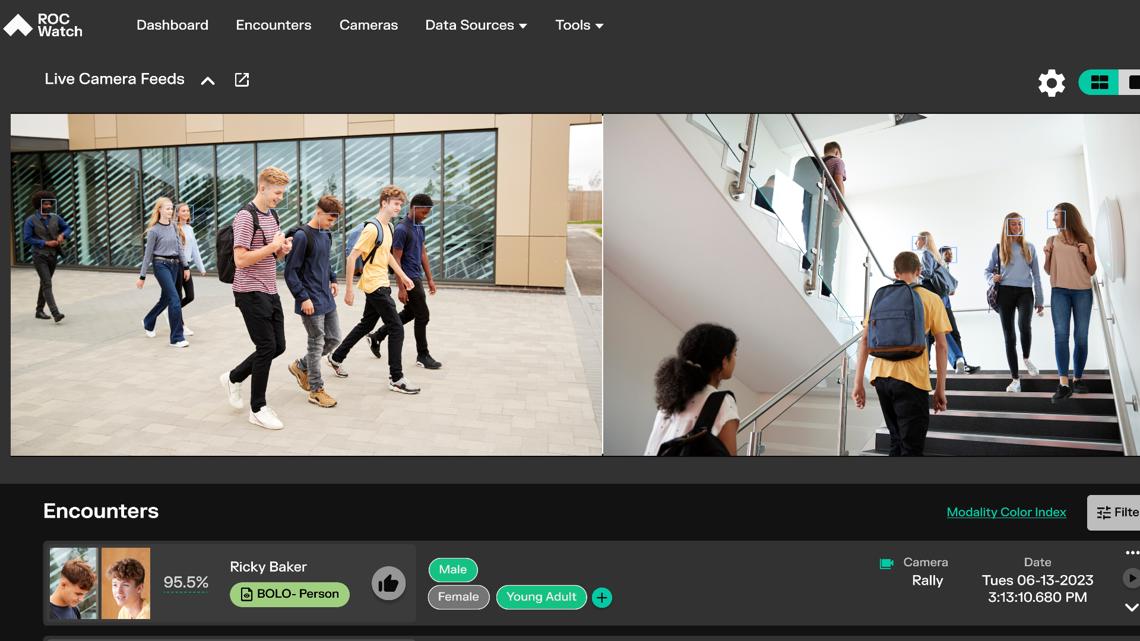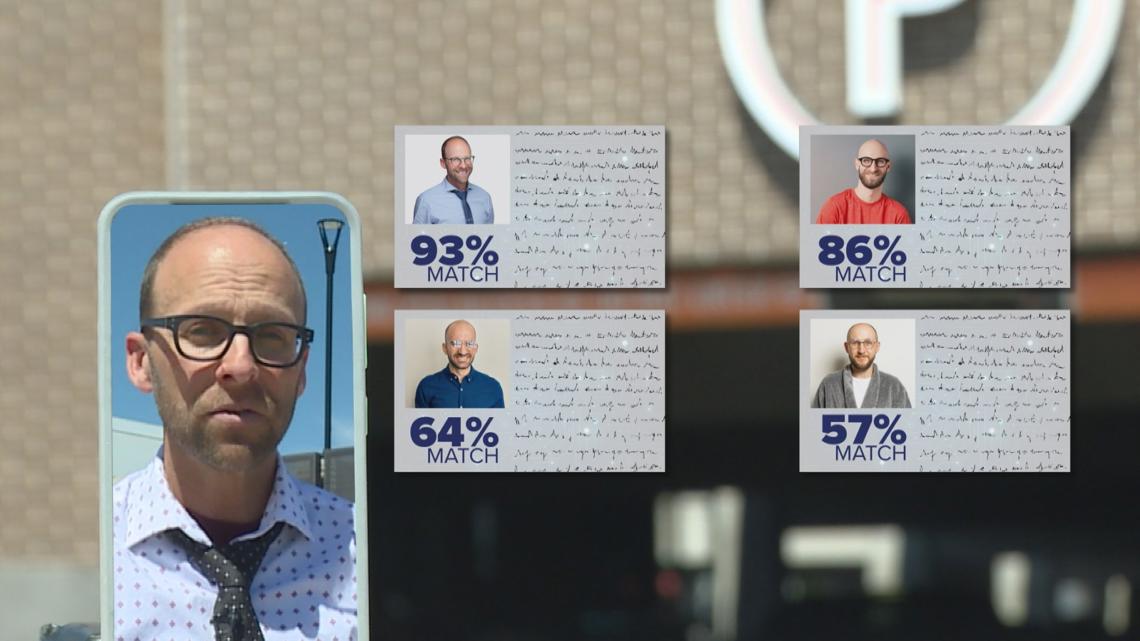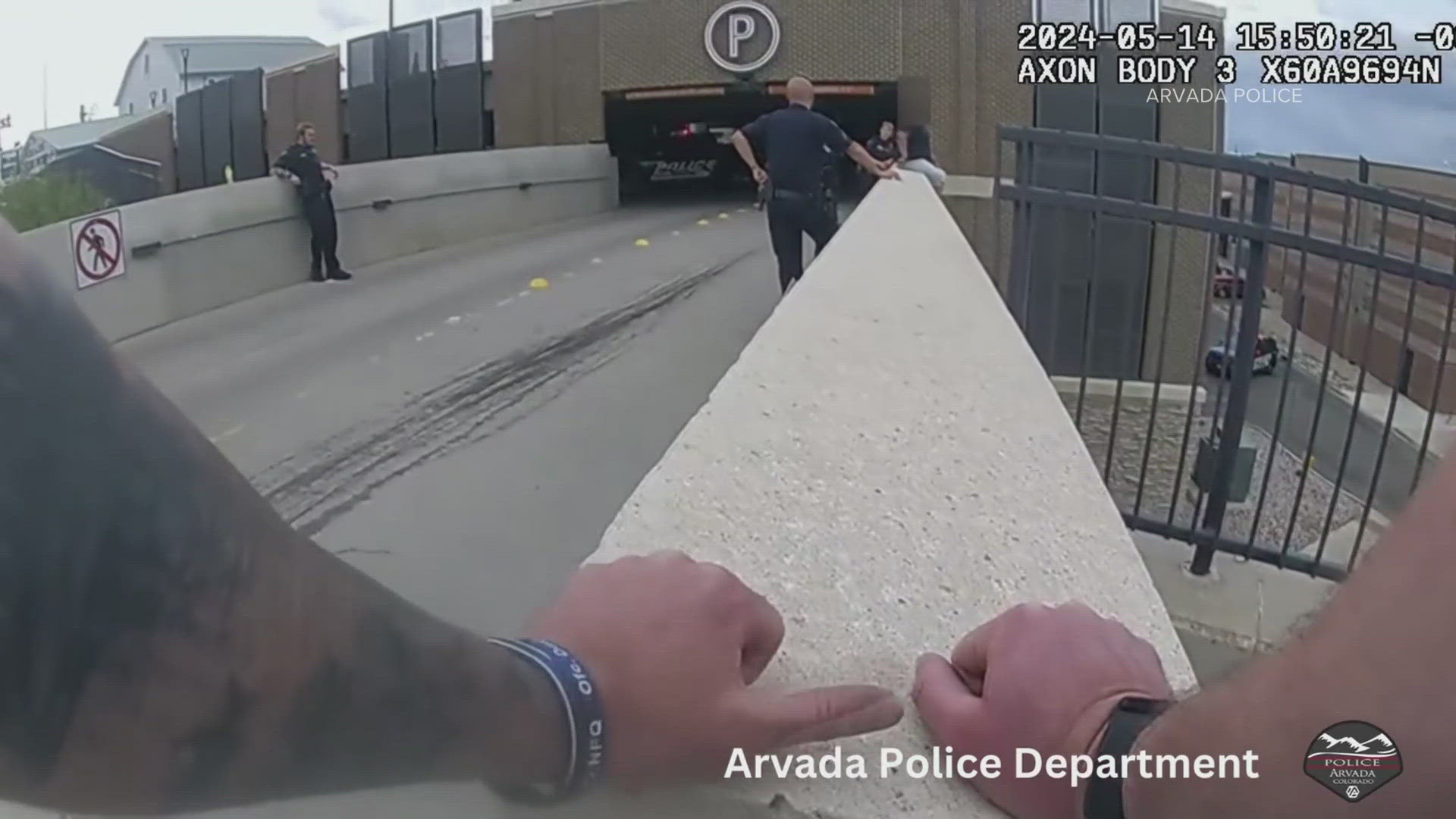ARVADA, Colo. — Arvada Police pulled a woman off the edge of a parking structure bridge several stories above the driveway below.
The department posted body worn camera video on social media saying that facial recognition helped officers and a co-responder help the woman.
“What you don't see in our video is the negotiations that went on behind the scenes, you know, the trying to get this person off the bridge, the presence of a co-responder,” Arvada Police Detective David Snelling said.
The video also does not show an Arvada Police officer snapping a photo of the woman to try to identify her.
“They actually took the initiative to snap a cell phone picture. And through the system that we do facial recognition with, they were able to upload,” Snelling said. "She had kept talking during negotiations that we should know who she was.”
Arvada Police uses facial recognition algorithms though Rank One Computing Corporation (ROC) to match images with booking photos.


“The known photographs that we use are actually booking photographs from around the state,” Snelling said. “No DMV photos. We're not looking at social media.”
After uploading the photo of the woman on the bridge, the results return options based on a level of certainty.


“To me, it’s maybe a simple way of explaining it, but it's like a facial fingerprint,” Snelling said. “We were able to discover who she was with a very high percentage.”
A state law passed in 2022 set guidelines for law enforcement agencies using artificial intelligence facial recognition. It requires “meaningful human review” which is defined as “review or oversight by one or more individuals who are trained.”
“We still need human intervention to make sure that there's no misuse of the system, to make sure that we're not misidentifying people and to make sure that we're getting our facts right,” Snelling said.
He said the photo match is one investigatory tool, but other detective work is needed.
“If it's in a criminal situation, we still have to do the police work behind the scenes. We've got to do the interviews. We've got to do the fact checking, the matching of tattoos, other identifying information; social security numbers, dates of birth, height, weight,” Snelling said. “We've gotten matches back where it looks very close, but there was probably about eight inches of height difference.”
He said that sometimes photos are not good enough to get a confident match or there is no match because the person does not have a booking photo.
“It's just like pulling a fingerprint from a scene. If we don't get enough points on that fingerprint, or we don't get enough facial structures, then the algorithm for facial recognition isn't going to work, nor should it,” Snelling said.
Snelling said that knowing the woman’s name helped get her off the bridge.
“Once they started to call her by her name, it actually, kind of, calmed the situation somewhat,” Snelling said.
The video that the department posted received backlash in the comments about how the woman was pulled off the ledge, brought to the ground and handcuffed.
“She is handcuffed and detained until we can get her on an ambulance pram and in an ambulance,” Snelling said. “The use of her name appeared to work for a little bit. We can't show, you know, 30 minutes of negotiations in social media on a video. But again, they tried for a very long time.”
More from Marshall Zelinger:
SUGGESTED VIDEOS: Next with Kyle Clark

